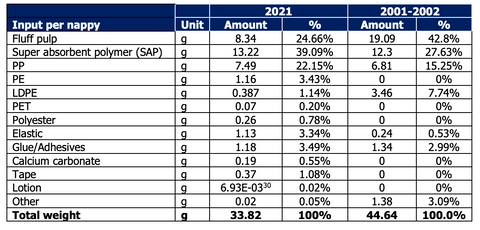When it comes to choosing the right nappies for your little one, the decision often boils down to two main options: cloth or disposable. While convenience, cost, and environmental impact are commonly considered factors, the composition of these nappies is often overlooked. Yet, understanding what materials make up the diapers that cradle your baby's delicate skin is essential for making an informed choice.
The latest government research (find our write up of their report here) published a table showing the components of each type of nappy. Here are their findings:
What are disposable nappies made from?

What are reusable nappies made from?

In the report, it was found that, in total, disposable nappies use 97.5% more raw materials to manufacture than reusable cloth nappies. The materials themselves are also less environmentally friendly, and although both contain plastic, it is important to remember that disposable nappies are single-use.
Ultimately, the decision between cloth and disposable nappies is a personal one, influenced by factors such as lifestyle, values, convenience, and environmental consciousness. It's essential to weigh the benefits and drawbacks of each option carefully.
As parents and caregivers, we can make a positive impact by opting for environmentally friendly disposable options or exploring hybrid solutions that combine the convenience of disposables with reusable components. Additionally, considering the quality and safety of the materials used in both cloth and disposable nappies is crucial for our baby's comfort and well-being.
By unraveling the composition of nappies, we can make more conscious choices that align with our values and contribute to a sustainable future. Whether it's choosing cloth nappies for their natural fibers and reusability or selecting eco-friendly disposable alternatives, every decision we make can have a positive impact on our baby's health and the environment.
Remember, the journey of parenthood is filled with choices, and by staying informed and mindful, we can provide the best for our little ones while caring for the world they will inherit.

